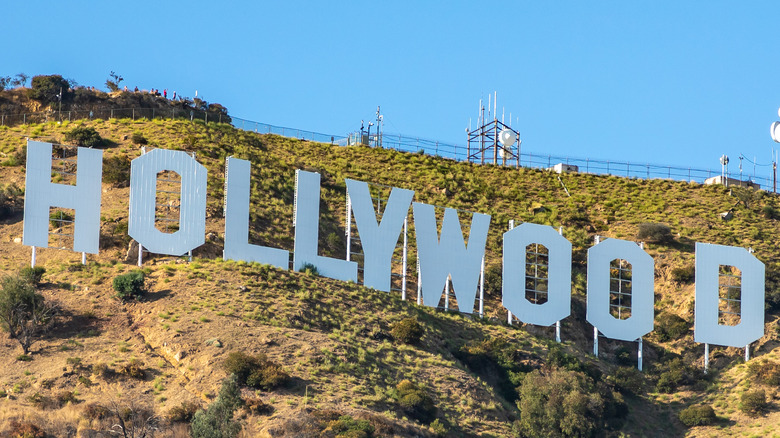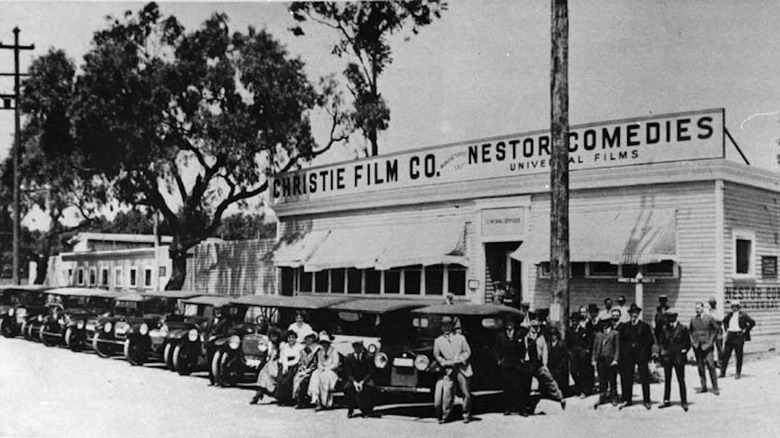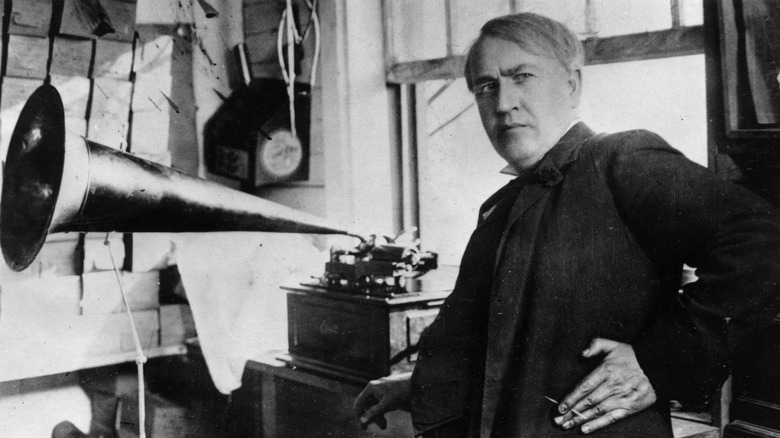How Hollywood Really Got Its Start
For more than a century, Hollywood has been synonymous with the American film industry. However, the American film industry was originally based in New Jersey, so how did it end up in California?
The first movie completed in California was made in 1908 — according to History, it was "The Count of Monte Cristo" (though production started in Chicago). It wasn't until World War I, a decade later, that Hollywood's reputation was fully established. According to KCET, production ramped up in Hollywood to make up for the lack of European movies coming out during the war.
There were a variety of reasons for the move from the East Coast to the West. One was the cost of labor. Director Cecil B. DeMille noted that for his first movie made in California ("The Squaw Man"), wages for carpenters and other workers were 25-50% less expensive than back east. There were few labor unions to protect workers in California at the time, and Hollywood's pro-business government kept more from forming (via KCET).
Hollywood had the right climate
Directors also began looking for areas where they could shoot outside for much of the year, i.e. places sunnier than New Jersey. They avoided options like Florida and Louisiana because of the humidity and the threat of hurricanes, according to KCET. In 1911, the Motion Picture World trade magazine promised 320 days a year of mild weather for shooting in Hollywood. The constant sunshine didn't just allow more frequent outdoor shooting, but also helped with lighting scenes, because electric lights of the era couldn't properly expose film on their own, according to George Washington University's History News Network.
There was also geographical variety in the Hollywood and Los Angeles area. Within a short distance were mountains, desert, and the ocean that provided settings for different types of films. Architectural styles were also varied in Southern California, which helped with on-location shoots as well. Land was inexpensive there at the time, and readily available, so studios were able to buy plenty of it to build their facilities (via KCET).
It was far from Thomas Edison's Trust
Possibly the biggest reason for the industry's migration to the West Coast was Thomas Edison's Motion Picture Patents Company, known as "The Trust," formed in 1908. Edison owned patents on many motion picture cameras and types of equipment. His trust included some other major patent holders, including Eastman Kodak, whose film stock was the only type available for legal purchase. The Trust controlled licenses on using any of this equipment, and they used law enforcement, or in some cases, even hired thugs, to make sure no one was using their cameras or other equipment without permission. The Trust's strict rules made operations difficult for many filmmakers (via Broken Secrets).
According to History, Hollywood was outside The Trust's jurisdiction, so filmmakers couldn't be sued there for illegal use of equipment. Broken Secrets, on the other hand, says that Hollywood was simply far enough away from The Trust's headquarters that enforcement of their regulations became more difficult. In any case, the move allowed filmmakers to experiment and flourish more than they could back East, and to do it in better weather, with cheaper labor.


